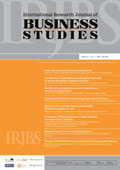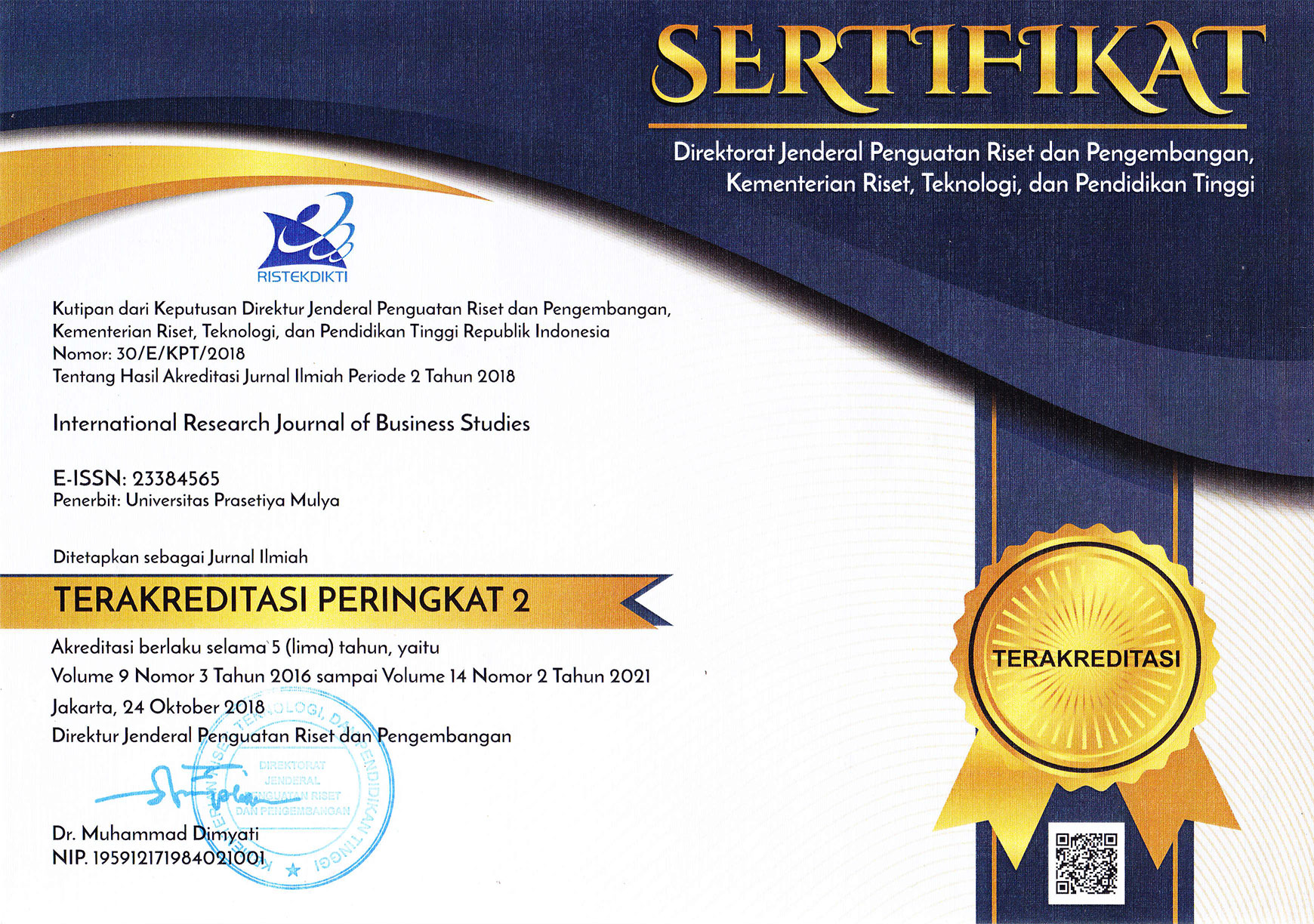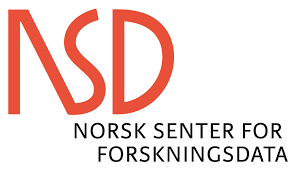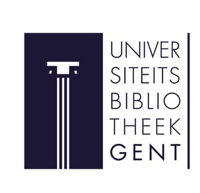Article Metrics |
|
|
Past Behaviour, Conscientiousness Personality, and Attitude Toward Engagement in Workplace Affair
Abstract
The phenomenon of workplace romance is an integral part of organisational dynamics. Workplace romance might result in both positive and negative effect. The negative side of workplace romance bears the phenomenon of workplace affair, in which workers engage in extra-marital relations with each other. This research aims to test whether past behaviour, conscientiousness personality, which a part of big five model personality traits and attitude have an impact on the likelihood of employee’s engagement in the workplace affair. As many as 250 workers in Greater Jakarta participated in the survey with minimum tenure six months as criteria of sampling. The analysis of data is performed using structural equation modelling (SEM) process. The result indicates that workers who have workplace romance engagement in their past behaviour would affect the attitude of perceiving workplace romance. The attitude itself plays as a mediator between past behaviour and the engagement of workplace affair. At the same time, personality determinant does not give any significant effect on attitude and engagement in workplace affair. To mitigate the issue of workplace affair, the organisation needs to perform background checking prior accepting the employees since the past behaviour of engagement in workplace romance is the reliable indicator of future likelihood in workplace affair engagement. While the previous research studies about the effect of workplace romance, this study emphasize deeper into the findings from the workplace affair perspectives, which is the negative effect of workplace romance.
Keywords: Workplace romance, Workplace affair, Attitude, Past behaviour, Conscientiousness
* Faculty of Economics and Business, Universitas Indonesia, Jl. Prof. DR. Sumitro Djojohadikusumo, Kukusan, Kecamatan Beji, Kota Depok, Jawa Barat 16424, Indonesia
** Tilburg School of Economics and Management, 5037 AB Tilburg, Netherlands
Full Text:
References
Abzug, R. (2016). Extramarital affairs as occupational hazard: A structural, ethical (cultural) model of opportunity. Sexualities, 19(2), 25–45. https://doi.org/10.1177/1363460715583586
Ajzen, I. (1985). From Intentions to Actions: A Theory of Planned Behavior. In Action control, Berlin, Heidelberg: Springer. https://doi.org/10.1007/978-3-642-69746-3_2
Ajzen, I. and Fishbein, M. (1980). Understanding Attitudes and Predicting Social Behavior. Englewood Cliffs, New Jersey: Prentice-Hall.
Ali, I. (2018). Personality traits, individual innovativeness and satisfaction with life. Journal of Innovation & Knowledge, 7(3), 1–11. https://doi.org/10.1016/J.JIK.2017.11.002
Ariani, M. G., Ebrahimi, S. S., & Saeedi, A. (2011). Managing workplace romance; a headache for human resource leaders. 3rd International Conference on Advanced Management Science, 19, 99–103.
Arora, R., & Rangnekar, S. (2016). Linking the Big Five personality factors and career commitment dimensions. Journal of Management Development, 35(9), 1134–1148. https://doi.org/10.1108/JMD-10-2015-0142
Banker, J. E., Kaestle, C. E., & Allen, K. R. (2010). Dating is hard work: A narrative approach to understanding sexual and romantic relationships in young adulthood. Contemporary Family Therapy, 32(2), 173–191. https://doi.org/10.1007/s10591-009-9111-9
BBC Indonesia. (2017). Apa yang Akan Terjadi Jika Hubungan Cinta di Tempat Kerja Berakhir Buruk? Accessed on 12 April 2018 from: http://www.bbc.com/indonesia/vert_cap/2016/04/160407_vert_cap_percintaan_kantor
Biggs, D., Matthewman, L., & Fultz, C. (2012). Romantic relationships in organisational settings. Gender in Management: An International Journal, 27(4), 271–285. https://doi.org/10.1108/17542411211244803
Career Intelligence. (2018). Romance in The Workplace: The Good, The Bad and The Ugly. Accessed on 15 February 2018 from http://career-intelligence.com/romance-in-the-workplace-the-good-the-bad/
Costa, P. T., & McCrae, R. R. (1990). Personality Disorders and The Five-Factor Model of Personality. Journal of Personality Disorders, 4(4), 362–371. https://doi.org/10.1521/pedi.1990.4.4.362
Doll, J. L., & Rosopa, P. J. (2015). Workplace romances: examining attitudes, experience, conscientiousness, and policies. Journal of Managerial Psychology, 30(4), 439–453. https://doi.org/10.1108/JMP-11-2012-0368
Fan, C. S., & Lui, H. K. (2004). Extramarital affairs, marital satisfaction, and divorce: Evidence from Hong Kong. Contemporary Economic Policy, 22(4), 442–452. https://doi.org/10.1093/cep/byh033
Foong, S.-Y., & Khoo, C.-H. (2015). Attitude, learning environment and current knowledge enhancement of accounting students in Malaysia. Journal of Accounting in Emerging Economies, 5(2), 202–221. https://doi.org/10.1108/JAEE-07-2012-0030
Jahan, Y., Chowdhury, A. S., Rahman, S. M. A., Chowdhury, S., Khair, Z., Huq, K. A. T. M. E. & Rahman, M. M. (2017). Factors involving extramarital affairs among married adults in Bangladesh. International Journal of Community Medicine and Public Health, 4(5), 13-79. https://doi.org/10.18203/2394-6040.ijcmph20171506
Karl, K. A., & Sutton, C. L. (2000). An examination of the perceived fairness of workplace romance policies. Journal of Business and Psychology, 14(3), 429– 442. https://doi.org/10.1023/a:1022928216431
Kolesnikova, J., & Analoui, F. (2012). Managing human resource romance at work: towards a “considerate” approach. Journal of Management Development, 32(1), 36–56. https://doi.org/10.1108/02621711311286991
Mainiero, L.A. (1989). Office romance: Love, power, and sex in the workplace. New York: Rawson Associates.
Malhotra. (2010). Marketing Research: An Applied Orientation (6th Edition). New York: Prentice-Hall.
Marius, J. A. (2006). Perubahan Sosial. Jurnal Penyuluhan, 2(2), 125–132. https://doi.org/10.1007/s13398-014-0173-7.2
Ouellette, J. A., & Wood, W. (1998). Habit and intention in everyday life: The multiple processes by which past behavior predicts future behavior. Psychological Bulletin, 124(1), 54-74. http://dx.doi.org/10.1037/0033-2909.124.1.54
Pierce, C. A. (1998). Factors associated with participating in a romantic relationship in a work environment. Journal of Applied Social Psychology, 28(18), 1712–1730. https://doi.org/10.1111/j.1559-1816.1998.tb01342.x
Pierce, C. A., & Aguinis, H. (2001). A Framework for Investigating the Link between Workplace Romance and Sexual Harassment. Group and Organization Management, 26(2), 206–229. https://doi.org/10.1177/1059601101262005
Pierce, C. A., Karl, K. A., & Brey, E. T. (2012). Role of workplace romance policies and procedures on job pursuit intentions. Journal of Managerial Psychology, 27(3), 237–263. https://doi.org/10.1108/02683941211205808
Pizam, A. (2016). Workplace romance in the hospitality industry. International Journal of Hospitality Management, 56, 136–137. https://doi.org/10.1016/j.ijhm.2016.06.001
Psychology Today. (2010). Having an Affair? There Are Six Kinds Different Things. Accessed on 23 February 2018 from Psychology Today https://www.psychologytoday.com/us/blog/the-new-resilience/201004/having-affair-there-are-six-different-kinds
Quinn, R. (1977). Coping with cupid: The formation, impact, and management of romantic relationships in organisations. Administrative Science Quarterly, 22, 30-45.
Shuck, B., Owen, J., Manthos, M., Quirk, K., & Rhoades, G. (2016). Co-workers with benefits. Journal of Management Development, 35(3), 382–393. https://doi.org/10.1108/JMD-02-2015-0014
The Economist. (2005). The End of The Office Affair? Accessed on 1 March 2018 from https://www.economist.com/node/3743745
Trafimow, D., & Borrie, W. T. (1999). Influencing future behaviour by priming past behavior: A test in the context of petrified forest national park. Leisure Sciences, 21(1), 31–42. https://doi.org/10.1080/014904099273273
Wall Street Journal. (2007). Red Cross Ousts CEO Everson. Accessed on 22 July 2019 from https://www.wsj.com/articles/SB119619004451105488
Wheatcroft, J. (2016). Love is all around us in the workplace. Human Resource Management International Digest, 24(6), 21–23. https://doi.org/10.1108/HRMID-05-2016-0079
Wijanto, S. H. (2008). Structural Equation Modeling dengan LISREL 8.8: Konsep dan tutorial. Yogyakarta: Graha Ilmu.
Copyright (c) 2021 INTERNATIONAL RESEARCH JOURNAL OF BUSINESS STUDIES
International Research Journal of Business Studies has been covered by the following services: | ||||||||||||||||||||||||
|




















